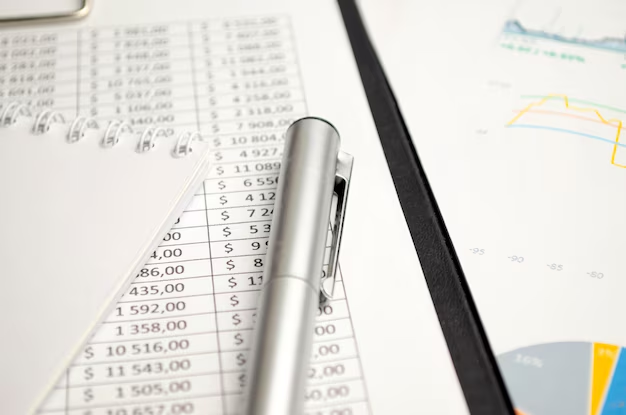Discovering CD Interest: A Step-By-Step Guide to Calculating Certificate of Deposit Interest
When exploring ways to make your money work for you, a Certificate of Deposit (CD) often emerges as a reliable choice. Ideal for risk-averse individuals, CDs offer a fixed return over a specified period, making them a popular choice among conservative investors. However, an essential aspect of making the most of a CD is understanding how to calculate the interest it earns. This not only empowers you to make informed financial decisions but also ensures you know what to expect by the time your CD matures.
🎯 Why Understand CD Interest Calculations?
Before diving into calculations, it’s crucial to understand why knowing how CD interest works benefits you:
- Financial Planning: By grasping CD interest calculations, you can better plan your finances and set achievable financial goals.
- Comparative Analysis: Understanding interest helps you compare different CD offerings, ensuring you choose the one that best suits your financial needs.
- Expectation Management: No surprises at maturity! Clear insight into expected returns helps with managing your expectations.
Understanding Different Types of CD Interest Calculations
CDs can come with various interest calculation methods, influencing the amount you'll receive at the end. Below, we explore these methods in detail.
1. Simple Interest
Simple interest is the easiest to understand, as it is calculated on the principal amount only. The formula for simple interest is:
[ ext{Simple Interest} = P imes r imes t ]
Where:
- ( P ) = Principal amount (initial deposit)
- ( r ) = Annual interest rate (decimal)
- ( t ) = Time in years
Example: If you invest $1,000 at a 3% annual interest rate for five years, the calculation is:
[ ext{Simple Interest} = 1000 imes 0.03 imes 5 = $150 ]
Thus, at maturity, you'd receive the principal ($1,000) plus the interest ($150), totaling $1,150.
2. Compound Interest
Compound interest works differently as it adds the earned interest back to the principal at specified intervals (such as annually, semi-annually, or quarterly). This means you earn interest on your previous interest.
The formula for compound interest is:
[ A = P imes (1 + frac{r}{n})^{n imes t} ]
Where:
- ( A ) = The amount of money accumulated after n years, including interest.
- ( n ) = Number of times interest is compounded per year.
Example: Investing $1,000 at a 3% annual interest rate compounded annually for five years would be calculated as:
[ A = 1000 imes (1 + frac{0.03}{1})^{1 imes 5} = 1000 imes (1.03)^5 approx $1159.27 ]
Thus, the total at maturity would be $1,159.27, including the principal amount and the compounded interest.
🏦 Diving Deeper Into CD Terms
Term Length
Term length is critical because the longer your money is tied up, the more interest you can potentially earn. CDs often range from periods as short as six months to several years. Higher-term CDs usually offer better rates, but they come with the trade-off of less liquidity.
Interest Rate
Rates can vary significantly among financial institutions and are influenced by the economy. Knowing how to calculate CD interest can help identify if a rate is favorable.
Compounding Frequency
Understanding the compounding frequency is crucial since more frequent compounding means more interest earned. Common frequencies are:
- Annually
- Semi-annually
- Quarterly
- Monthly
Essential Steps to Calculate CD Interest
Step 1: Gather Key Information
Before calculating:
- Determine the principal amount you will deposit.
- Know the interest rate offered by the CD.
- Find out the term length and compounding frequency of the CD.
Step 2: Identify the Interest Type
Identify whether your CD pays simple or compound interest to apply the appropriate calculation method.
Step 3: Use the Right Formula
Depending on the type and frequency of compounding, apply the corresponding formula to calculate the interest or future value of your CD.
Step 4: Sum Up the Total
Once you calculate the interest:
- Simple Interest: Add the interest to the principal.
- Compound Interest: The compound formula already gives you the future value, including principal.
Step 5: Evaluate the CD's Performance
Once calculated, compare the results with different CD options or other investment vehicles, taking note of factors like liquidity and risk.
⚠️ Key Considerations
- Early Withdrawal Penalties: Some CDs impose penalties if you withdraw funds before maturity, which can eat into your interest earnings.
- Tax Implications: Interest earned on CDs is often taxable unless held in tax-advantaged accounts. You may want to check tax regulations to avoid unexpected liabilities.
🌟 Visual Summary: Key Points on Calculating CD Interest
Here's a quick reference to keep handy:
- Principal: Initial deposit amount.
- Rate: Express as a decimal (e.g., 3% = 0.03).
- Term: How long your money is invested.
- Type: Identify if the CD pays simple or compound interest.
- Compound Frequency: Monthly or annual, more frequent compounding means more interest.
By following these steps and keeping these concepts in mind, you can approach CD investments with confidence, armed with knowledge that helps in making informed decisions.
Financial literacy doesn't just empower you to manage your current investments; it shapes how you plan your financial future. Whether you're a seasoned saver or just starting out, understanding the intricacies of CD interest calculations can significantly enhance your approach to financial planning.
🔍 Stay Informed! Regularly reviewing your current knowledge about CDs and financial products ensures that you make the most of your earned money now and into the future.

Related Topics
- a Certificate Of Deposit
- a Certificate Of Deposit Usually Has
- Are Certificate Of Deposit Fdic Insured
- Are Certificates Of Deposit a Good Investment
- Are Certificates Of Deposit Fdic Insured
- Are Certificates Of Deposit Liquid
- Are Certificates Of Deposit Safe
- Are Certificates Of Deposit Taxable
- Are Certificates Of Deposit Taxed
- Are Certificates Of Deposit Worth It